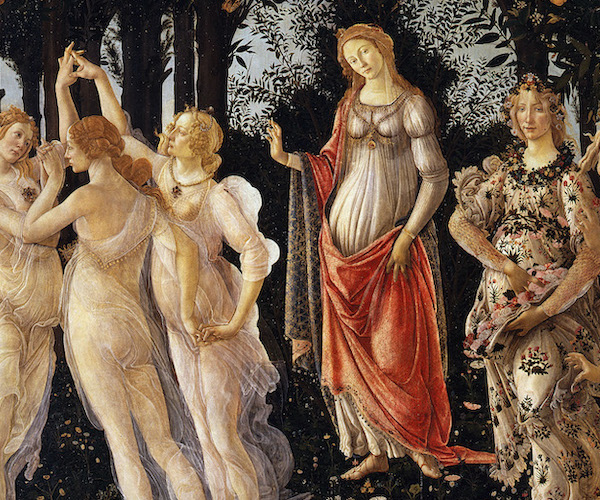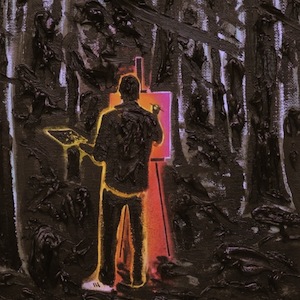Lorette C. Luzajic takes in beauty one sip and one look at a time for this Wine and Art…
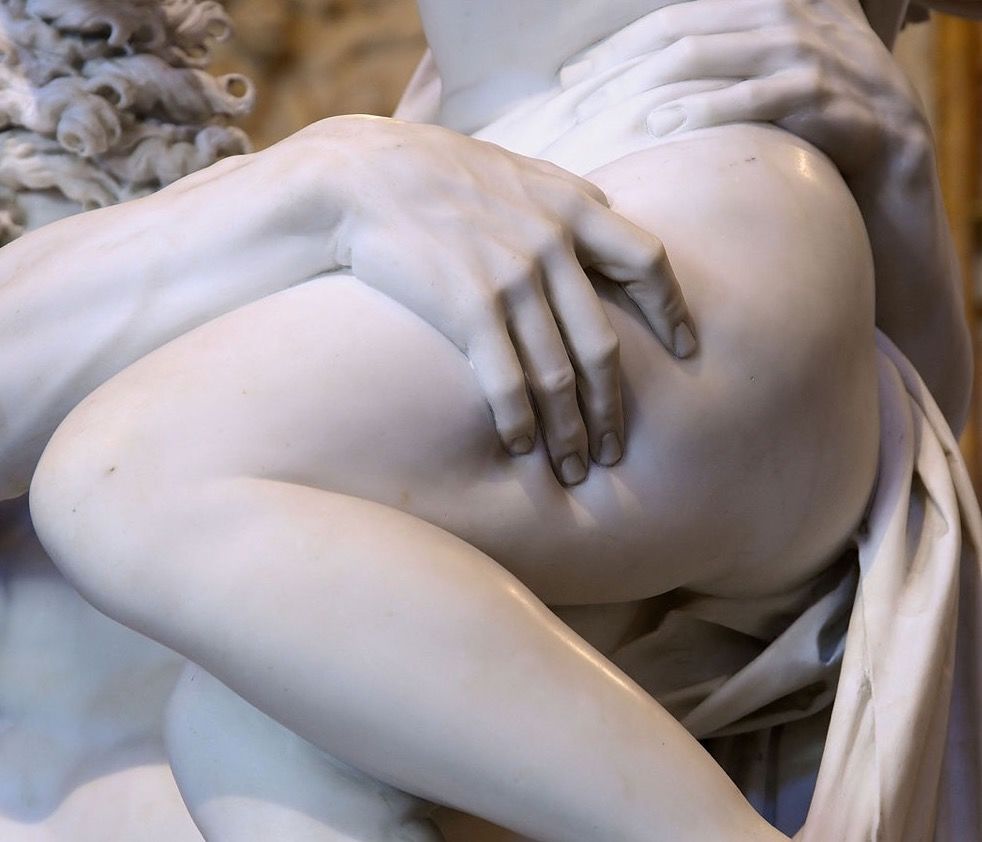
Is beauty in the eye of the beholder? Or is its pursuit programmed in our genes at the cellular level, an essentialist insistence of evolution? Is it, as Keats proclaimed, truth itself? Is it sacred, bestowed on a select few by the gods, or is it skin deep, or even profane?
And what is it really? A source of inspiration, or a superficial lust? Is it something in everyone, everything?
Whatever it is, it’s worth billions of dollars. It’s the muse of all the great artists and writers and composers. It has toppled kingdoms and reduced mortals to rubble. It’s been worth killing for.
The history of beauty is full of contradictions and wars.
The definition proves slippery. It’s related to sex yet transcends it. It is about women and breasts and the erotic impulse, but children and churches and beaches are the most beautiful possibilities of all.
It is all about deception and artifice, yet nature is teeming with it. We work for it, we try to buy it, and it makes our lives immeasurably more wondrous. Yet each of us have been broken by it in one way or another. It is about biology, and emotion, yet it’s a backbone of philosophy and even mathematics, aesthetic yet spiritual, an integral property of our appreciation of everything from architecture to wine to poetry.
Not surprisingly, beauty and its refutation have been an ongoing muse and theme in art history since humans first began to tell our stories. Beauty is both primitive and futuristic. It is a curse, and the most sublime gift.
It is fleeting and fragile, yet immortal. It lives in legend past the inevitable decay of the flesh. It is found in the rubble, too, in ruins and desolate landscapes, and in the apocalyptic corridors of technology.
For three days, I walked through Rome. I know that others for whom time was in limited supply approach travel in the same way- we walk through ancient worlds to absorb beauty, to let it find us. My list of personal musts and friends’ recommendations for Rome was so vast that I crumpled and tossed it, choosing to let enchantment find me of its own volition. I had only two rules for my solo romance with Rome- eat nothing but pizza, and drink wine every time I stopped walking.
The beauty of the fountains and parks I ambled through turned some stone thing inside of me into water, or gold.
The way Bernini made marble into flesh transformed me.
Look at how this marble hand grips granite as if it is as soft as bread.
“Beauty is worse than wine,” said Aldous Huxley, “it intoxicates both the holder and beholder.”
Some years later, in Barcelona, the mosaic cacophonies of colour and shapes under the Spanish sun were as beautiful as anything I’d ever seen.
Gaudi had always appealed to me because his freaky and outlandish creations were so fantastical and radically unnatural. I was surprised to find out that what drove him was not artifice and rebellion against tradition but the beauty he saw inside it. His main motivators were the beauty of God, and the beauty of nature, even if his expressions of those things seemed over the top and topsy-turvy. His Alice in Wonderland shapes are just the same spirals you see in snails and seashells; his strange muddy scales are just the bark bodies of palm and date trees. We all circle back to beauty, even if we see it or express it differently. Monet and Gaudi are but two sides of the same coin.
If I went to the Louvre, would I find the most beautiful woman of all time in Da Vinci’s mysterious, half-smiling portrait? I’m not sure. The Mona Lisa’s slow and sultry simplicity defies history: what in this wan, thin-lipped portrait makes her a deity? No one can really say. Beauty is not always predictable.
I drink wine for many good and terrible reasons, but one of them is for how it softens me, makes me receptive to beauty. Wine is splendour. Just a few drops and everything is pretty and magic. It pushes down some of our defenses and gives us immediacy and sensuality instead of anxiety and propriety. It’s romantic. Who doesn’t reach for the matches to light a few candles after a few sips of cab franc? Who doesn’t feel closer to ecstasy listening to music or viewing art when they’ve had a wee tipple of black velvet, or brook-brisk sauvignon blanc?
This Valentine’s Day, get into the spirit of love and beauty whether you are the owner of a lonely heart or happily companioned. If you are miserably attached, or buoyantly solo, give romance its due on its day anyway. Splurge a little and treat yourself to a fine bottle of beauty, then drink almost the whole thing. Look through time at the eternal, whether on your Pinterest boards of art you saw on your trips, or in tattered old coffee table art books.
May I suggest Batasiolo Barolo Nebbiolo? It’s $31.95, a steal for this stunning mouthful of violets and licorice, both dancing long past your swallow.
Pair it with a little John Williams Waterhouse. The dewy maidens and silky redheaded swirls are an alluring and ethereal match for a fairy tale wine.
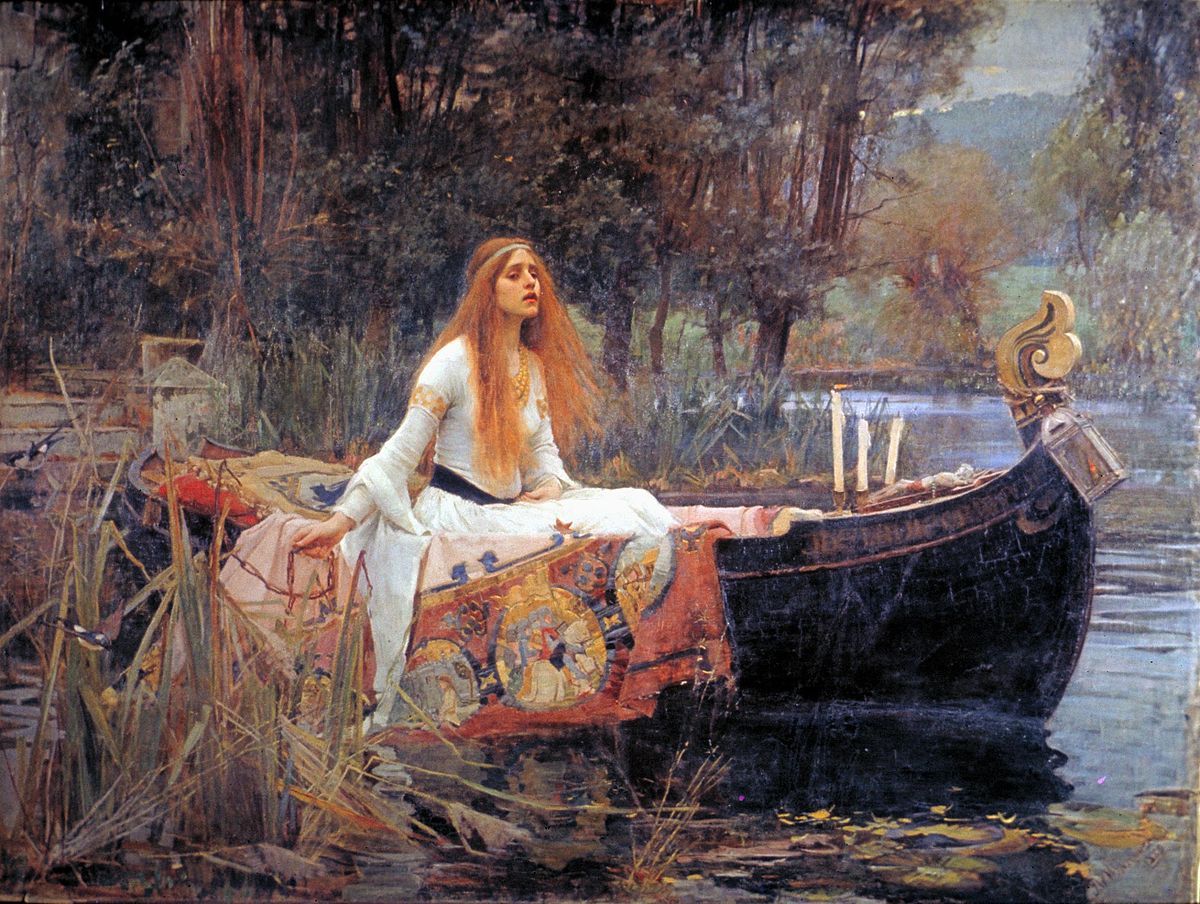
Riesling romantics should get their hands on Thirty Bench’s luscious ripe home grown classic. These are sweet Ontario streams, where so many reading this stole our first kisses.
While a Beamsville farm might seem a long way from Austria’s past ornate decadence, this wine still somehow summons Klimt’s glittering, golden women. It’s a flight of fancy, to be sure, but so much of beauty’s gift, and wine’s, is that break from reality.
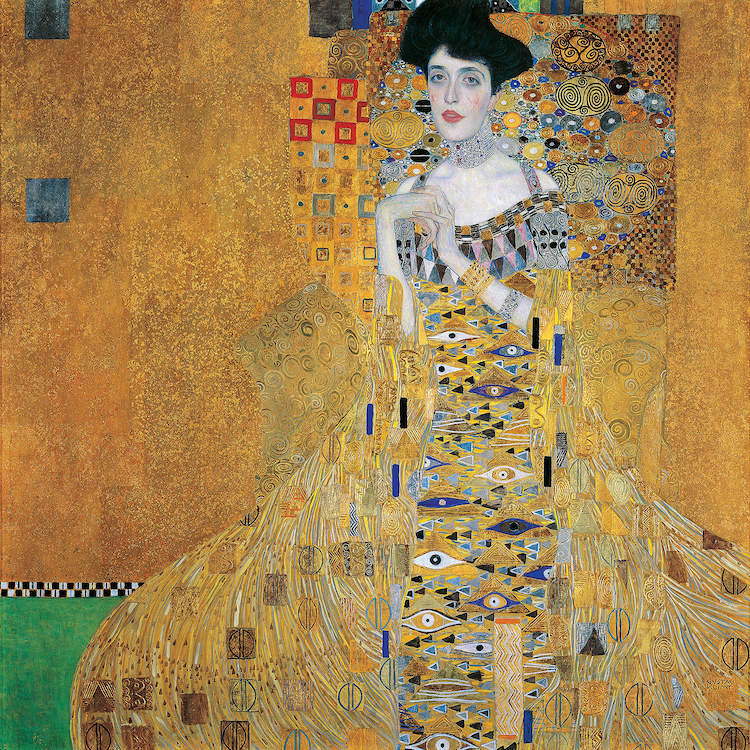
If pink is your thing, pour a little Mas des Bressades Cuvée Tradition Rosé 2018. It’s sweet and subtle, almost shy. It pairs well with a walk through the Primavera woods with Boticelli.
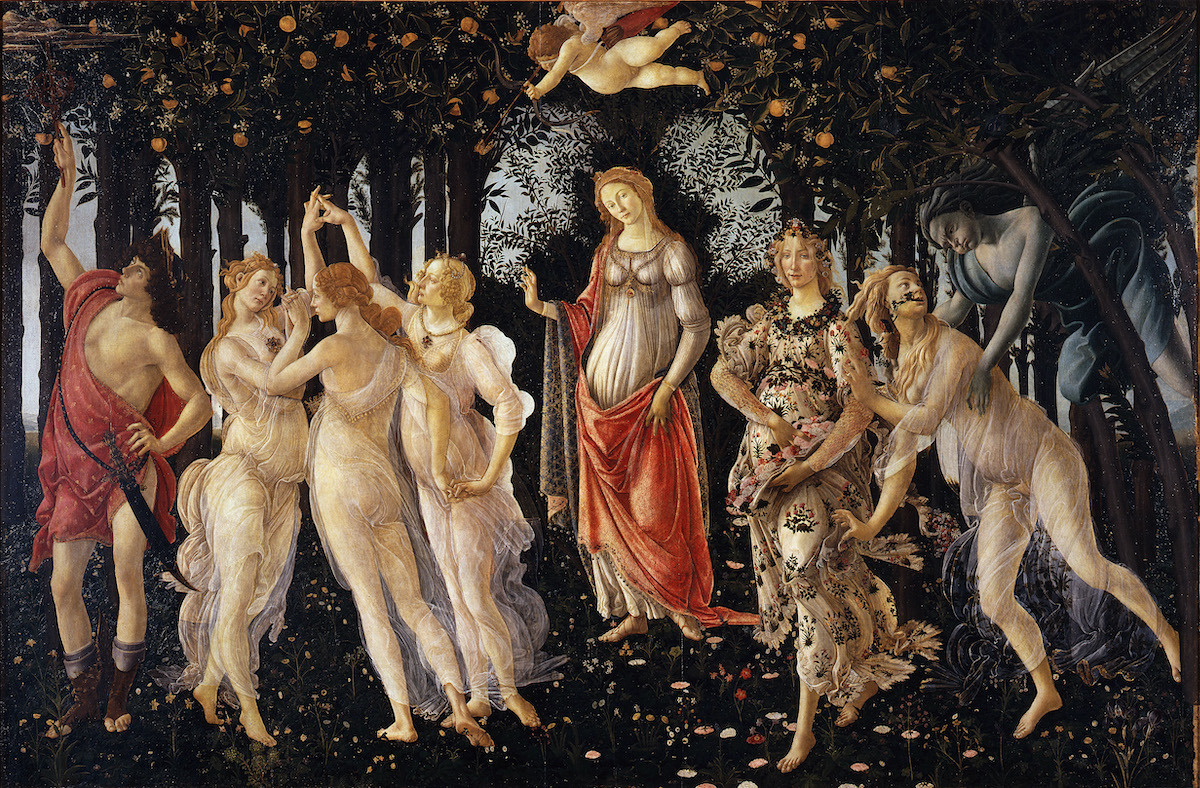
If the beauty of the night is more along the lines of your secret longing, you can stroll with Van Gogh into the beauty of midnight. Starry Night Over the Rhone is one of the paintings that stopped me in my tracks, when I saw it in an exhibition on mystical landscapes at the Art Gallery of Ontario. “When I have a terrible need of – shall I say the word – religion. Then I go out and paint the stars,” wrote Vincent. He was notoriously unloved, but possessed one of the most sensitive and sensual imaginations in history. He was moved to tears by colour, and wrote hundreds of thousands of words about the impact of purple and navy and teal on his soul.
Although Van Gogh was usually sopped on absinthe, an intense shiraz is a better partner for walking after midnight. Australia’s Lackey is a good fit for the misunderstood and offbeat, all mint and black pepper and firefly constellations.
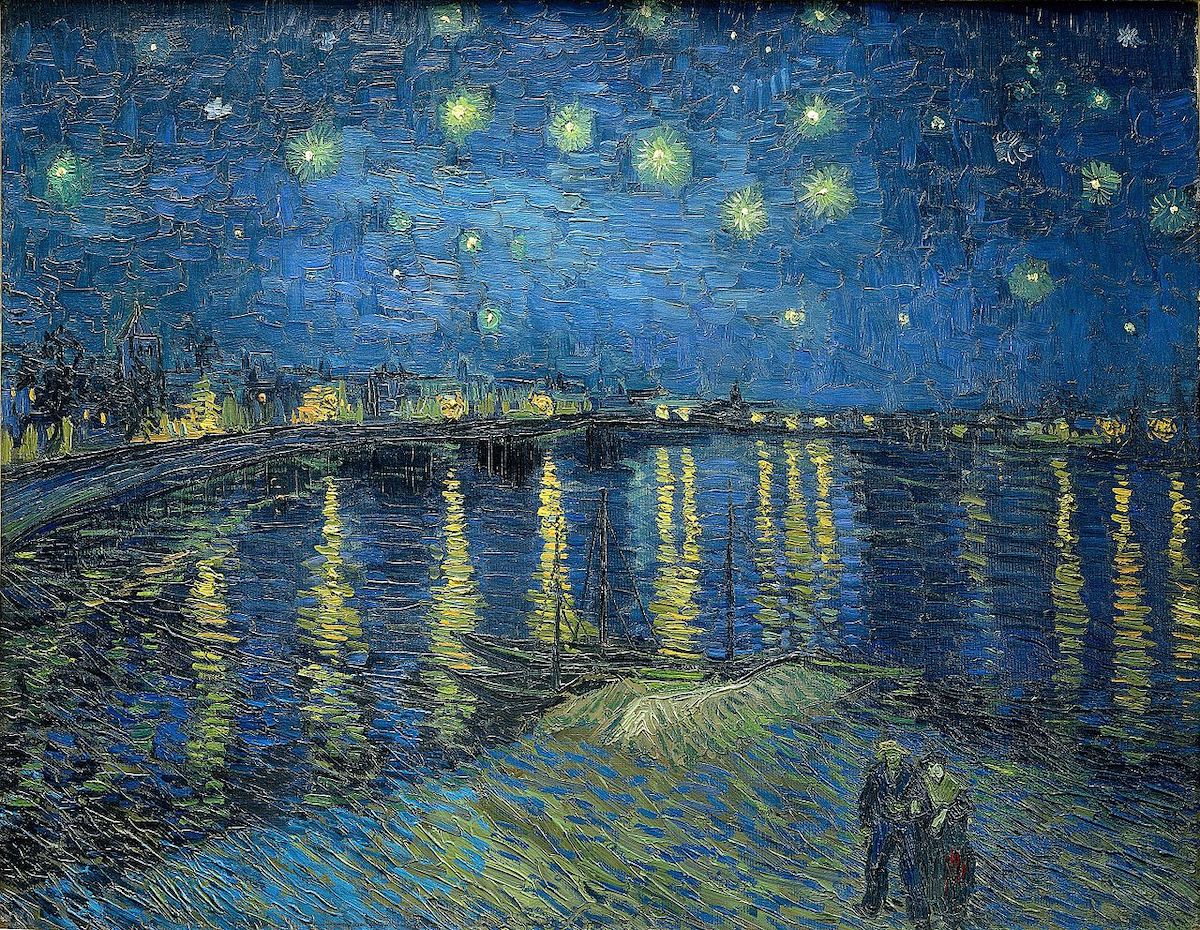
“Unexpected intrusions of beauty, that is what life is,” wrote Pulitzer winning novelist Saul Bellow. I like to open the door for those intrusions, and that’s why wine flows freely in my house and heart, and why I make and look at art.
On Valentine’s Day, I honour the gods of love and beauty my courting them. The mystery is that even though beauty is fleeting, it puts us in touch with the eternal. Or, as the great Latin American poet Eduardo Galeono said, “We are all mortal until the first kiss and the second glass of wine.”
Lorette C. Luzajic is an award-winning mixed media visual artist from Toronto, Ontario, whose collage paintings are internationally collected. Her art has been featured on a 20 foot billboard in New Orleans, on reality TV, and in ad campaign for Carrera Y Carrera, a Madrid-based luxury jewelry brand. She is a widely published poet and writer, nominated twice each for Best of the Net and the Pushcart literary prizes. She is the editor of The Ekphrastic Review, a journal devoted to writing inspired by art. Her most recent book is Pretty Time Machine: ekphrastic prose poems. Visit her at www.mixedupmedia.ca.

